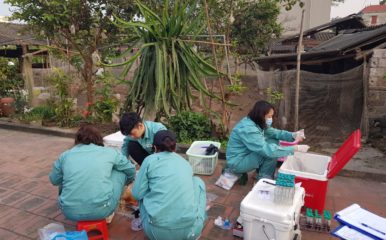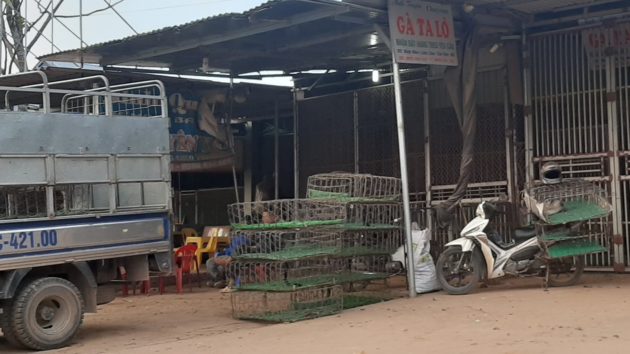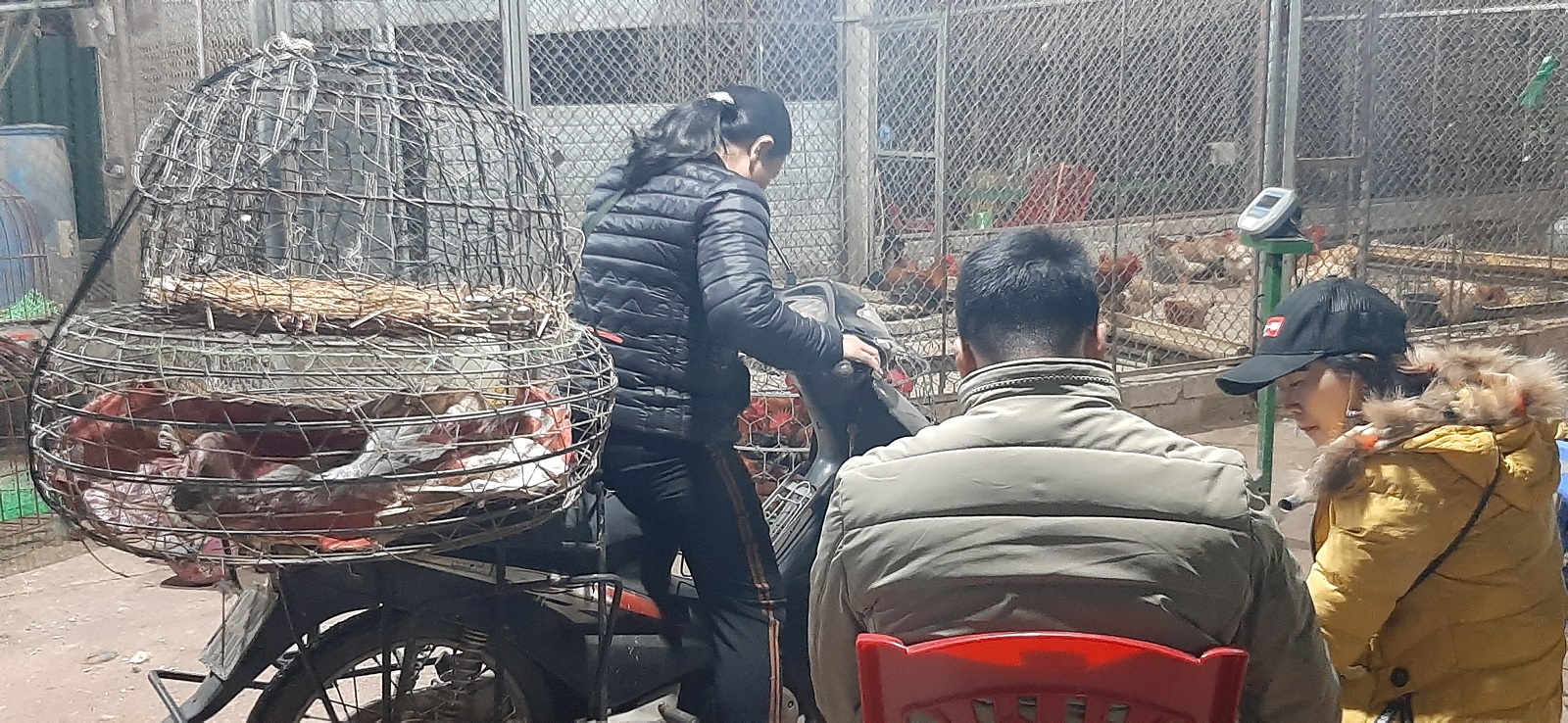
Why we track chickens
Published on 11/08/2022

Nguyen Van Dai
 This blog focuses on the ZOODLE word ‘TRACK’.
This blog focuses on the ZOODLE word ‘TRACK’.
When most people see the word ‘track’, it is likely they think about it in terms of goods delivery, and in particular think of ‘tracking number’ or ‘tracking ID’. This is even more so since the COVID-19 pandemic made online purchasing and the tracking of goods so much more of an everyday matter for ordinary people.
The word ‘track’ though has two more pertinent senses for investigators in the One Health Poultry Hub. This is because tracking modality is applied in a flexible and effective way in both the management of the Hub and in our fieldwork.
First, in relation to the Hub, as researchers in a large – more than 150 investigators! – international study, it is essential that we keep track of where we are. This is why the UK investigators and researchers in study sites discuss research plans and research progress, as well as other Hub activities in study countries, in regular weekly and monthly online meetings.
Any issues raised are reported, discussed and handled quickly. It all helps the interdisciplinary work to run well and effectively – to stay on track, in fact.
Link tracing
However, in our field and laboratory work as veterinary epidemiologists working on zoonotic diseases, ‘track’ takes on yet another sense. It is key to our link tracing studies.
Our link tracing studies are a core research package in each of our study countries. Link tracing helps to identify paths along the poultry production and distribution networks we want to consider for biological sampling.

By interviewing chicken traders in live bird markets and tracing the movements of chickens along the poultry production and distribution networks, the original farms or households that supply chickens to their ‘endpoints’ (live bird markets, shops, slaughterhouses or other slaughter points), can be identified and selected for biological sampling. By tracking in this way we can ensures that all the chickens we sample belong to the poultry production and distribution networks we are interested in.
Laboratory testing results of these tracked biological samples then helps to assess the transmission and evolutionary dynamics of the targeted health hazards along and between those production and distribution networks. In our studies, the health hazards we are particularly interested in are the foodborne zoonotic bacteria Salmonella and Campylobacter and the avian influenza virus. In this way, we can identify points of high risk for the transmission of these pathogens from chickens to people – essential knowledge to inform risk-reduction strategies for disease transmission.
Poultry networks
This year, the Vietnam team will begin use of the One Health Poultry Hub TRACKING App. This was developed to trace the movements of poultry and poultry products within poultry trade networks – and will transform the way in which our team keeps tracking chickens. The app will allow us to record trading locations and store survey data of traders on a mobile phone and transfer it quickly and easily to the server.
The traders who were known from the link tracing study will be contacted and informed about the study and the TRACKING App. Traders willing to participate in the study will be asked to allow us to track their vehicle for broiler trading in several trips.
Information on transactions the trader made on the trips (e.g., trading locations, whether purchases or sales were made, breeds and number of chickens sold/purchased etc.) will be collected using the app. In addition, interviews will be conducted and recorded during the trips to collect additional information about the study participants.
Data extracted from the app will then help us to evaluate the poultry flows and dynamics and resulting impacts on disease transmission within poultry trading networks.
We are confident that findings from this tracking work of the Hub will support communities and policymakers in developing practices and policies that help to minimise health hazards along the poultry production and distribution networks.

